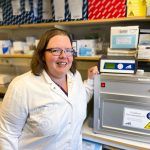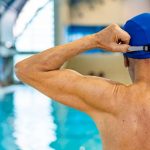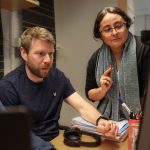NEW STUDY. A research group at the University of Gothenburg has developed a method that makes the exact binding sites of specific proteins in the genome discernible. The method is based on the idea that DNA damage induced by ultraviolet (UV) light can change where proteins bind. The method is now published in the journal Nature Communications. Kerryn Elliott, a researcher in Erik Larsson Lekholm’s group at the Department for…
Exercise seems to protect against major brain hemorrhage
NEW STUDY. Regular physical activity and exercise may reduce bleeding in individuals with intracerebral hemorrhage, a University of Gothenburg study shows. The researchers emphasize the importance of physical activity to protect the brain. The study, published in the journal Stroke and Vascular Neurology, analyzed data on 686 people treated for intracerebral hemorrhage at Sahlgrenska University Hospital in Gothenburg during the years 2014 to 2019. The results are based on a…
Pediatric clinical studies’ underfunding risk
NEW STUDY. A clinical study with children as participants entails extra costs often omitted in the initial budget. Clinical studies involving children are thus at risk of being undercompensated, new research shows. Kids will be kids when they take part in clinical studies, as at other times. Sometimes they need a break to do something else for a while before the next study session can start. With children as study…
Physical activity crucial for poststroke recovery
NEW STUDY. After a stroke, physical activity can be pivotal to successful recovery. People who spend four hours a week exercising after their stroke achieve better functional recovery within six months than those who do not, a University of Gothenburg study shows. The study, now published in the scientific journal JAMA Network Open, is based on data concerning 1,500 stroke patients in 35 Swedish hospitals. The participants were grouped according…
New machine learning framework developed for quick radiation biomarker discovery
NEW STUDY. Weeks-long searching for biomarkers have now been condensed to minutes or even seconds of automatic work. Through a collaboration project between Bioinformatics and Data Centre (BDC) and Britta Langens at Sahlgrenska Cancer Center, a machine learning framework for radiation biomarker discovery and absorbed dose prediction have been developed. “To identify biomarkers using machine learning is a novel approach in cancer radiotherapy, which earlier was a manual and time-consuming method where human bias is a risk. Britta Lange had acquired huge amount of data through animal…





